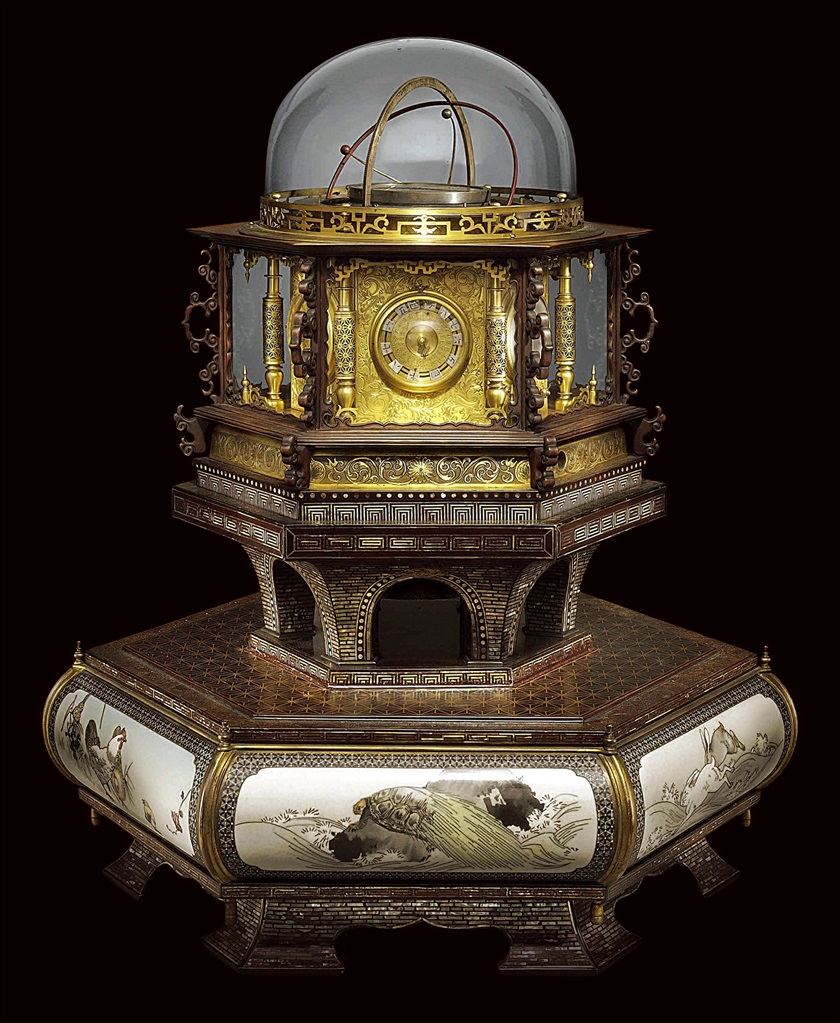Exhibition Guide
History Zone
Man-nen Dokei (Perpetual Clock)

Hisashige Tanaka produced the masterpiece of Japanese-style clocks, the Man-nen Dokei in 1851 as a compilation of clock technologies which is said to be the most advanced technology of the Edo era.
The Man-nen Dokei has a celestial globe in its zenith section, and it reproduces the motion of the Sun and moon.
Underneath it, the clock has six multifunctional faces.
Those indicate Japanese-style time, the lunisolar calendar's 24 seasons, days of the week, dates of the sexagenary cycle, the age of the moon, and Western-style time.
Hisashige, with a great challenging spirit, studied astronomy, adopted new knowledge and technology from the West.
He put all information regarding "time" and "calendars" on the clock, so that the people of the Edo era could understand the six faces of the clock.
It is said that the Man-nen Dokei worked by clockwork for approximately one year, but actually, it seemed to operate for about 75 days because of the durability of its wooden frame.
The Man-nen Dokei, which combined creativity and ideas of mechanisms interlocked with all parts as a unit with very beautiful decorations such as cloisonné, lacquer ware, mother-of-pearl work, and chasing.
It is truly the fruit of artisan skill.


